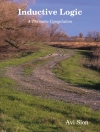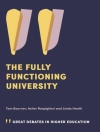Archaeologists in Print is a history of popular publishing in archaeology in the nineteenth and twentieth centuries, a pivotal period of expansion and development in both archaeology and publishing. It examines how British archaeologists produced books and popular periodical articles for a non-scholarly audience, and explores the rise in archaeologists’ public visibility. Notably, it analyses women’s experiences in archaeology alongside better known male contemporaries as shown in their books and archives. In the background of this narrative is the history of Britain’s imperial expansion and contraction, and the evolution of modern tourism in the Eastern Mediterranean and Middle East. Archaeologists exploited these factors to gain public and financial support and interest, and build and maintain a reading public for their work, supported by the seasonal nature of excavation and tourism. Reinforcing these publishing activities through personal appearances in the lecture hall, exhibition space and site tour, and in new media – film, radio and television – archaeologists shaped public understanding of archaeology. It was spadework, scripted.
The image of the archaeologist as adventurous explorer of foreign lands, part spy, part foreigner, eternally alluring, solidified during this period. That legacy continues, undimmed, today.
Praise for Archaeologists in Print
’Thornton demonstrates the potential of archival research to illuminate archaeology’s development as a discipline … Her research invites exploration into other geographic areas and/or periods of archaeological work and indicates the potential of projects attuned to the intersections of gender and colonialism within that history … most importantly, Thornton’s book should prompt modern archaeologists to consider the narratives we construct around our own work and to question who benefits (or suffers) from our chosen stories.’
American Antiquity
'[The] critical examination of the multifaceted nature of popular archaeological publishing from the late nineteenth-century and the original archival research that Thornton incorporates through her analysis … offers readers a critical insight into the history of archaeologists in print.’
The British Society for Literature and Science 'Thornton’s examination of the hitherto underexplored area of nonacademic publications, such as memoirs, guidebooks, popular histories, children’s books, fiction, and serialized compendiums, makes Archaeologists in Print unique among books on the history of archaeology, where the tendency has been to focus on methodologies, field experiences, and the politics of writing. Thornton opens the world of archaeology to include not only male academics but also female adventurers, local laborers, illustrators, readers, and tourists. This book is appropriate for scholars and students of archaeology, ancient Near Eastern studies, and postcolonial studies.’
American Journal of Archaeology
’A unique addition to the history of British archaeology, Archaeologists in Print is a closely researched examination of the story archaeology has told about itself.’
Current Archaeology
‘a refreshing new perspective on the history of archaeology and how it reached the public’
Times Higher Education
’Thornton has provided a highly readable and detailed exploration of the institutional networks of archaeological knowledge production at the turn of the century. Despite its regional and temporal specificity, Archaeologists in Print will appeal to a cross-disciplinary readership as both a pedagogical tool and research aid. The author’s exceptionally clear and cogent writing style makes for a highly digestible teaching tool at undergraduate and graduate level. Moreover, Thornton’s careful analysis of the intertwined issues of empire, tourism, science and publishing will be of interest to those conducting research within and across these fields of inquiry.’
LSE Review of Books
’Astoundingly thorough treatment. It’s a good read, too, especially for those of us with a mind for detail. There are extensive source notes, and a dense bibliography, should readers wish to follow up on any of the points raised…. Thornton has managed to make her book available for free on-line under Creative Commons. I’m grateful, but must note that the print version is handsome and I’m glad to have it in my personal library. I’ll be citing it often.’
History of Archaeology Research Network (HARN)
’This beautifully written book will be valued by all kinds of readers: you don’t need to be an archaeologist to enjoy the contents, which take you through different publishing histories of archaeological texts and the authors who wrote them. From the productive partnership of travel guide with archaeological interest, to the women who feature so often in the history of archaeological publishing, via closer analysis of the impact of John Murray, Macmillan and Co, and Penguin, this volume excavates layers of fascinating facts that reveal much of the wider culture of the late nineteenth and twentieth centuries. The prose is clear and the stories compulsive: Thornton brings to life a cast of people whose passion for their profession lives again in these pages. …Warning: the final chapter, on Archaeological Fictions, will fill your to-be-read list with stacks of new titles to investigate! This is a highly readable, accessible exploration into the dynamic relationships between academic authors, publishers, and readers. It is, in addition, an exemplar of how academic research can attract a wide general readership, as well as a more specialised one: a stellar combination of rigorous scholarship with lucid, pacy prose. Highly recommended!’
Samantha Rayner, Director of UCL Centre for Publishing; Deputy Head of Department and Director of Studies, Department of Information Studies, UCL
’Deftly written and drawing on a wide range of material, Amara Thornton demonstrates how archaeology and how writing about the ancient past has captured the imagination since the late nineteenth century and, crucially, the importance of this interpretation today. Thornton draws attention to the role of women in this public engagement, who were often eclipsed by their male counterparts, as well as underlining the imperial and oriental assumptions informing many archaeological narratives in a nuanced manner. Truly interdisciplinary in scope, Archaeologists in Print is a must read for anyone interested in the history of archaeology, the role of women in archaeology and publishing, and how history has been told through print and broadcast media. A timely study!’
Debbie Challis, Education and Outreach Officer at LSE Library
Spis treści
1 Scripting Spadework 2 Defining the Archaeologist
3 The Women Who Did
4 Marketing the Archaeologist
5 Scripting and Selling Archaeology
6 John Murray
7 Macmillan & Co
8 Penguin
9 Archaeological Fictions
10 Epilogue
Appendix: Archaeologist- Authors
O autorze
Amara Thornton is an Honorary Research Associate at the UCL Institute of Archaeology and a historian of archaeology. Her Ph D explored the social history of British archaeologists working in the Eastern Mediterranean and Middle East between 1870 and 1939. Amara held a British Academy Postdoctoral Fellowship from 2013 to 2016, has been Coordinator of the Institute’s History of Archaeology Network since 2010, and is Principal Investigator of Filming Antiquity, a digitisation and research project for historic archaeology footage from the 1930s-1950s. She blogs on her research at www.readingroomnotes.com.












